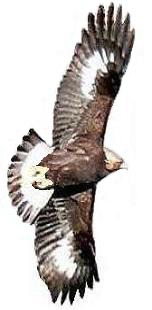Northern Harrier
(Circus cyaneus)
Migration Timeframe:
Migration for Northern Harriers
begins at the end of August, and then numbers
increase quickly during the first part of September, peaking
by mid-September. Their migration begins to tail off in
October, although there can still be big numbers leaving
through the October timeframe. Juveniles leave ahead of
adults, while most males usually exit late fall, or even in
early winter once the first decent snow is on the ground.
|
Year |
Peak Week |
Avg |
|
2002-2007 |
Sep 15-21 |
220 |
|
Year |
Peak Week |
Count |
|
2008 |
Sep 29-Oct 05 |
155 |
|
Year |
Earliest
Obs |
Count |
Year |
Latest
Obs |
Count |
|
2002-2007 |
Aug 31 2007 |
3 |
2002-2007 |
Dec 08 2007 |
1 |
|
2008 |
Aug 25 |
2 |
2008 |
Nov 22 |
3 |
Where to Watch:
The Harrier is one raptor species that I think provides the closest looks during most
migrations. This is due to their typical flight a mere metre or two
off the ground as they hunt the fields in front of the count area. For the photographers in the crowd this can mean
some really great shots. Note that the Harriers
are sometimes seen soaring and moving with buteos so make sure to
watch for them skyward as well.
High Counts:
There were no new records set for Harriers in 2008.On the flipside,
there have been some great "harrier" days over the
previous few years
and a new one-day record was set on October 02 2006 when 252 were counted....with
74 in just 1 hour that same day!! The 2007 season was fantastic for spotting Northern Harriers with
a new 1-Year record count of 2,115 and a new
1-Month record count of 1,229.
|
1-Year |
Count |
1-Month |
Count |
|
2007 |
2,116 |
Sep 2007 |
1,229 |
|
1-Day |
Count |
1-Hour |
Count |
|
Sep 10 2006 |
252 |
Sep 10 2006 |
74 |
Yearly Totals:
The 2008 yearly total of 683 was barely a third of the 2007 count of
2,116. It lagged well behind both the 10-Year average and
5-year average. (averages are based on 1998-2007 and
2003-2007 counts).
|
Year |
Count |
Year |
Count |
Year |
Count |
|
1995 |
725 |
2000 |
302 |
2005 |
874 |
|
1996 |
338 |
2001 |
465 |
2006 |
1,966 |
|
1997 |
933 |
2002 |
992 |
2007 |
2,116 |
|
1998 |
725 |
2003 |
1,488 |
2008 |
683 |
|
1999 |
1,375 |
2004 |
531 |
2009 |
N/A |
|
10-Yr Avg |
5-Yr Avg |
|
1,084 |
1,395 |
Interesting Facts:
-
Unlike buteos and accipiters, Northern
Harriers will cross open water. A harrier banded at Hawk
Cliff was recaptured in Cuba after crossing 90 miles of
water to get there!!
-
Northerly breeders “leapfrog” southward.
over some of the more southerly breeders who tend to remain
“at home” all year.
-
Birds heading south will
winter throughout the U.S. while others go farther afield
to places like the Bahamas, Cuba, Dominican Republic, Lesser
Antilles and Bermuda
-
The “at-homers” maybe seen around
Cranberry Marsh, Nanticoke and the 407 – Derry Road area,
etc
-
Harriers have VERY good hearing...a result of their owl-like
"facial disk" that directs sound to their ears
-
They hunt their prey as they cruise just a few feet above
the ground...watching and listening intently
|
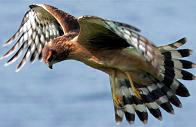
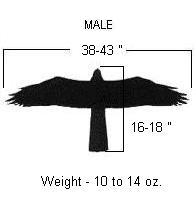
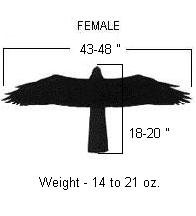
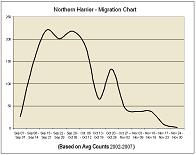
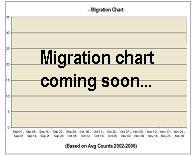
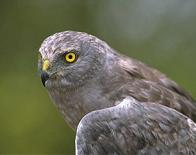
|
